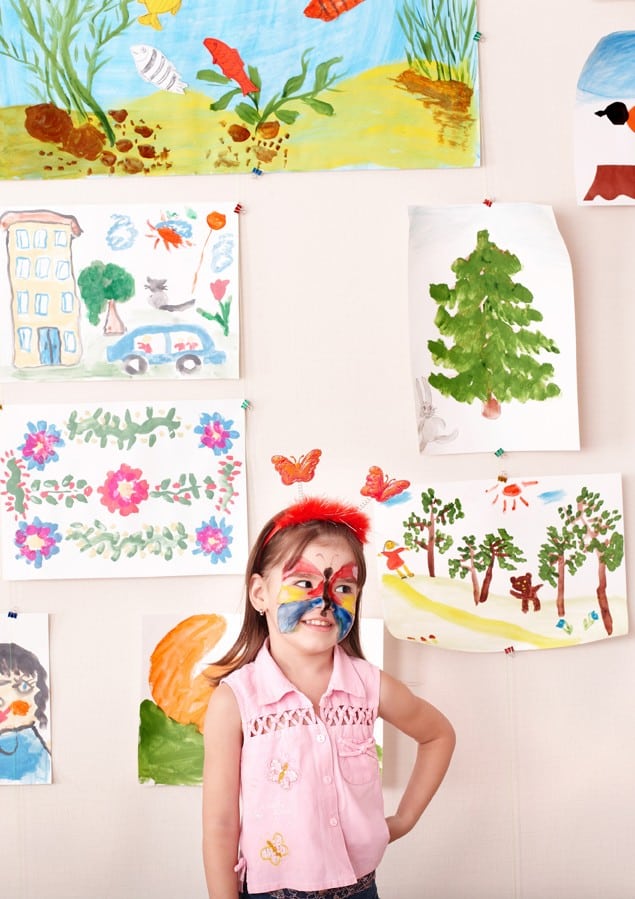Three-year-olds have a lot to say! As infants, children listen to sounds and words in their environment, practice how to make sounds and words, learn new words, and make sentences so that they can interact with the world around them. Parents and Nannies need to remember to talk, talk, and talk! Young children need to be engaged in language-rich experiences with families and caregivers in order to develop age-appropriate speech and language skills.
There are two main types of language, receptive and expressive.
Receptive language explores how a child understands what he/she hears and sees. A typically developing three-year-old can show a variety of receptive language skills. Language milestones for a typically developing three-year-old child include the ability to understand:
- 1000 vocabulary words or more
- Concept words, (e.g., location, size, numbers and feelings)
- Names of family members
- How to use objects
- Yes/no questions
- Basic “wh” questions, (e.g., what, where, who, when, how).
A young child of this age can also answer yes/no questions and basic “wh” questions as well as ask a variety of simple questions. This is also the age when children begin to tell their own personal stories (Lanza, Flahive, 2008).
Expressive language examines how a child uses words, gestures, sentences, and writing to send a message. Expressive language milestones for a typically developing three-year-old child including the use of 3-4 words in a sentences and the ability to use nouns, verbs, pronouns, plurals, and past tense verbs. A child should also be able to listen to and understand simple stories, songs, conversations, and follow multi-step directions (Lanza, Flahive, 2008).
Language does not develop at the same rate for every child, however, there are certain “red flags” that signal possible delays. These can occur in one or both areas of language, receptive and/or expressive language.
Receptive concerns include a child’s difficulty with:
- Looking and pointing to objects and pictures
- Maintaining eye contact
- Following directions
- Understanding questions
- Taking turns in a conversation.
Expressive language concerns look different and maybe noticeable to families and caregivers.
They include difficulty with:
- Asking questions
- Answering questions
- Naming objects
- Pointing or whining instead of using words
- Combining 3-4 words in a sentence
- Vocabulary development (ASHA).
Language delays are the most common type of developmental delay in children. Statistics indicate that one out of five children will learn to talk later than their peers (Healthy Children, 2011). The research indicates that there are a variety of causes of a language delay.
Sometimes the cause is unknown, but here are some of the more common causes:
- One of the first things to rule out is hearing difficulty or loss. Many young children have ear infections which can cause inconsistent hearing or hearing loss. If a child cannot hear consistently, then he will not develop language in a normal way. Any hearing concerns can be easily identified by a certified professional Audiologist.
- A child’s environment can also cause a language delay. If a child is not spoken to or does not hear others speaking, he will not learn the language or how to use language appropriately.
- Another cause may be prematurity. When a baby is born prematurely this may lead to developmental delays, possibly including a language delay.
- In addition, neurological problems like cerebral palsy, muscular dystrophy, and traumatic brain injury may affect the muscles needed for speaking, thus causing a delay.
- Autism also affects communication. Communication problems are often an early sign of autism.
Families who have concerns about their child’s language development should speak with the pediatrician and seek out the help of a certified professional Speech-Language Pathologist (Mott Children). Whether a child has a language delay or not, there are strategies and activities that all caregivers and families should use to promote language in children.
There are many practical everyday activities that promote language development in young children. The easiest way to encourage language development is to speak clearly to the child and model good speech. Children learn from their models. It is important to repeat what the child says, to indicate understanding, and then add on to what he says, modeling longer sentences. Activities for encouraging language development in young children include: reading repetitive books, singing songs, reciting nursery rhymes, engaging in fingerplays, asking questions that include a choice, (e.g., “Do you want cookies or brownies?”), and helping the child learn new words [e.g., naming body parts and talking about what you do with them]. (ASHA, 2016). Family members and caregivers should make time to play with young children one-on-one, turn off the television, and reduce or eliminate screen time. Children learn a language when people talk to them, so talk about the things you do together, and the places you go (Parents Choice).
Language is an important tool that allows a child to communicate with his parents, peers and other people in his environment. Language helps a child grow into a person who can socially interact with others throughout life. It is critical that a child develops appropriate language skills at a young age and that families and caregivers engage in language-rich activities to promote the development of these skills.
To learn more, a Preschool course is available with enrollment in the Intermediate Nanny and Childcare program at USNannyInstitute.com.
References
Activities to Encourage Speech and Language Development. (2016). Retrieved March 29, 2019, from Asha.org
Best Strategies to Stimulate Your 3-year-old’s Language Development. (n.d.). Retrieved April 10, 2019, from Parents-choice.org
Causes of Speech and Language Delays. (n.d.). Retrieved April 4, 2019, from Mottchildren.org
Language Delays in Toddlers: Information for Parents. (2011, November 18). Retrieved from HealthyChildren.org
Lanza, J., Flahive, L. (2008). LinguiSystems Guide to Communication Milestones. IL: LinguiSystems.
Preschool Language Disorders. (n.d.). Retrieved April 2, 2019, from Asha.org


Recent Comments